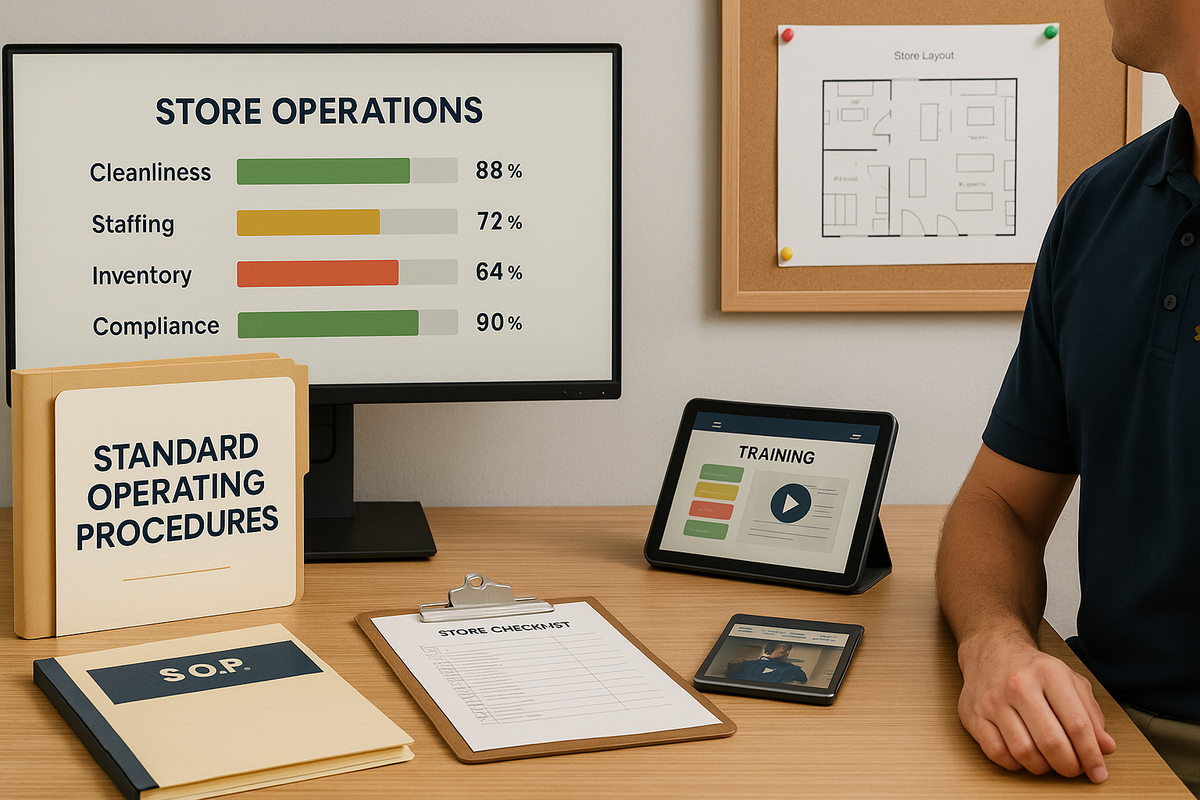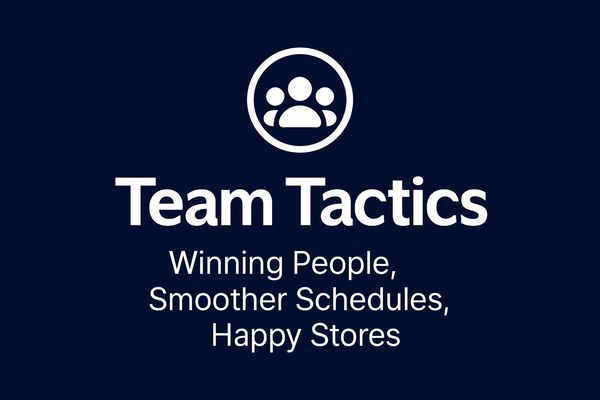How to Standardize Operations Across Convenience Stores
Standardizing operations across multiple convenience stores requires systematic approaches that balance uniformity with local flexibility. Effective standardization achieves 31% higher customer satisfaction and 18% better profitability through consistent procedures.

District managers overseeing multiple convenience store locations face the ongoing challenge of ensuring consistent operations while respecting individual store dynamics. Understanding how to standardize operations across convenience stores effectively requires systematic approaches that balance uniformity with local flexibility, creating sustainable improvements across entire portfolios.
"When I inherited fourteen stores with completely different operating procedures, customer experiences varied wildly depending on location," explains Cesar Rodriguez, district manager for a regional chain in the Southeast. "Standardization transformed our inconsistent operations into a cohesive system that improved both efficiency and customer satisfaction."
Industry research indicates that convenience store chains with standardized operations achieve 31 percent higher customer satisfaction scores and 18 percent better profitability compared to locations operating with inconsistent procedures.
Building Buy-In Through Collaborative Development
Successful standardization initiatives begin with securing genuine support from store managers who must implement new procedures daily. Rather than imposing top-down mandates, effective district managers involve experienced store leaders in developing standards that reflect real operational challenges.
Manager Input Sessions: Conduct structured meetings where store managers identify current best practices, discuss operational pain points, and contribute to solution development. This collaborative approach creates ownership rather than resistance to change.
Success Story Sharing: Highlight stores achieving superior results through specific procedures, allowing high-performing locations to demonstrate benefits rather than having district management simply mandate changes.
Gabrielle Foster, whose fourteen-store district spans urban and suburban markets, emphasizes the importance of manager involvement. "When store managers help create the standards, they become advocates rather than obstacles during implementation."
Strategic Pilot Testing Framework
How to standardize operations across convenience stores effectively requires proving concepts before chain-wide rollouts that risk disrupting multiple locations simultaneously. Pilot testing validates procedures while identifying implementation challenges in controlled environments.
Location Selection: Choose pilot stores that represent different market conditions, customer demographics, and operational challenges present across the district. This diversity ensures standards work effectively in various environments.
Measurable Metrics: Establish specific performance indicators including customer satisfaction scores, transaction times, inventory accuracy, and cleanliness ratings that demonstrate pilot program effectiveness.
Feedback Integration: Create systematic methods for collecting input from both staff and customers during pilot periods, using this information to refine procedures before broader implementation.
Dakota Kim, who manages twenty-three stores across multiple states, credits pilot testing with preventing costly implementation failures. "Testing procedures in three stores revealed problems we never anticipated, allowing us to fix issues before rolling out to twenty additional locations."
Documentation and Training Systems
Comprehensive documentation provides the foundation for sustainable standardization that survives staff turnover and maintains consistency over time. Effective systems balance thoroughness with usability, ensuring procedures remain accessible during daily operations.
Visual Standard Operating Procedures: Create step-by-step guides using photos and brief text that demonstrate proper execution of critical tasks including cleaning protocols, inventory handling, and customer service interactions.
Training Integration: Develop training programs that teach not just what to do but why standards matter, helping employees understand connections between procedures and business success.
Digital Accessibility: Utilize technology platforms that provide easy access to current procedures while enabling real-time updates across all locations when improvements are identified.
Phoenix Martinez, whose stores maintain consistently high mystery shopper scores, attributes success to comprehensive documentation. "Our detailed procedures eliminate guesswork and ensure new employees learn correct methods from day one."
Implementation Across Core Areas
Cleanliness Standards: Establish specific cleaning schedules, supply requirements, and quality checkpoints that create consistent store appearance across all locations. Include timing requirements and verification procedures that ensure compliance.
Inventory Handling: Standardize receiving procedures, stocking methods, and rotation protocols that maintain product quality while optimizing space utilization and reducing waste across different store formats.
Customer Service: Develop greeting standards, transaction procedures, and problem-resolution protocols that create uniform customer experiences regardless of location or staff member.
Monitoring and Continuous Improvement
Standardization requires ongoing attention rather than one-time implementation. Regular monitoring identifies compliance gaps while revealing opportunities for procedure refinement based on operational experience.
Performance Tracking: Monitor key metrics across all locations to identify stores struggling with standardized procedures or those achieving exceptional results that might inform further improvements.
Regular Audits: Conduct systematic reviews that verify procedure compliance while gathering feedback about practical challenges that might require standard modifications.
Understanding how to standardize operations across convenience stores creates sustainable competitive advantages through consistent customer experiences, operational efficiency, and simplified management oversight that benefits both individual locations and overall district performance.





